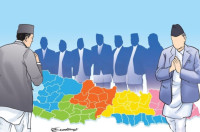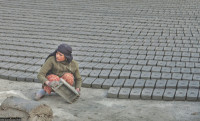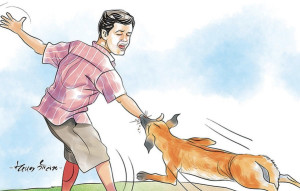Columns
Health systems in federal Nepal: Challenges and Opportunities
The coordination between the three levels of government must be seamless.
Heem Sunder Shakya
In the aftermath of the 2007 People's Movement, the 240 years of monarchy was abolished with 5th amendment of the Interim Constitution of Nepal, 2007. The amendment was the first document to bring forward the idea, officially, that Nepal was to be a federal democratic republic. It envisioned federalism as a prominent feature for a new Nepal. Local-level elections were held in 2017, but it wasn’t until mid-2018 that the federal structure started taking shape. Yet, in many sectors, including health, the transition has been ongoing.
To be sure, the entire health system has to go through major changes, and implementing these isn’t easy. The newly created 753 local governments will now oversee 4,000 plus health facilities. With the new governance structure, accountability has also been divided among the three tiers. Similarly, budgetary decisions and program implementation has been divvied up; the local level is responsible for a bulk of the responsibilities.
The other major change in the new structure is an increase in procurement units for health commodities, such as drugs and equipment, which is due to the addition of local governments, and the increased layers in supply chain management (for example, in the cold storage and transportation of vaccines).
But some of the changes could have been avoided if the transition was properly planned. One such issue has been the continuation of the district health offices. To focus on and promote healthcare services in local units, the district health offices were first removed from the new structure. However, after some alleged public outcry, the offices were reinstated. But the roles and responsibilities of these health offices are not very clear; all health facilities previously handled by the district health offices now report to their respective local level governments.
The coordination among the three levels of government has been lacking. Programmes remain unimplemented or partially implemented due to the federal government’s failure to transfer power, with clarity, to the provincial and local governments. The transfer of staff from federal employment to other tiers continues to be contentious.
In the current context, putting all the health facilities under local level governance poses a major challenge, with limited staff and skills to manage health programmes. Local-level governments themselves act as mini-ministries, with health being a component. This system lacks clear direction, capacity, and clarity to drive health programmes.
The reinstated health offices in districts do not have a clear mandate of functions like before. They used to manage services in districts and manage all health facilities, but they are now sort of defunct. Staff morale has gone down. Immediate attention is required to make these offices active again. What’s worse, the addition of multiple layers, with decentralised procurement of health commodities and equipment, increases the chances of inefficient buying or corruption.
While the challenges are many, the decentralisation of healthcare also has the potential to benefit all Nepalis. Specifically, the move towards federalism should provide all Nepalis, whether urban or rural, equal access to government-provided health services. But for this to work, the government at all tiers have to focus on plans and activities that aim to solve the aforementioned challenges.
The coordination between the three levels of government must be seamless, for one. Further, support must be given to local governments to strengthen their capacity to manage health programmes and logistics. As long as the capacity is strengthened, the opportunity to enhance service delivery is there—local participation and accountability in the process will push healthcare forward. The district health offices can be restructured to provide technical assistance to the local governments, especially on programme monitoring, evaluation, supply chain management and performance.
The roles of regulatory agencies must be expanded to monitor drug quality and procurement practises at all levels of government. Moreover, oversight is required to streamline and optimise procurement orders so that there are no unnecessary wastages and leakages occur.
The only way forward in order to strengthen the health system in the federal context is to empower the local level government to manage and provide quality health services and to take ownership of the health programmes. It seems a daunting task at present; however, in the long run, it will be sustainable and beneficial to the people of the country.
***
What do you think?
Dear reader, we’d like to hear from you. We regularly publish letters to the editor on contemporary issues or direct responses to something the Post has recently published. Please send your letters to [email protected] with "Letter to the Editor" in the subject line. Please include your name, location, and a contact address so one of our editors can reach out to you.




 18.12°C Kathmandu
18.12°C Kathmandu















